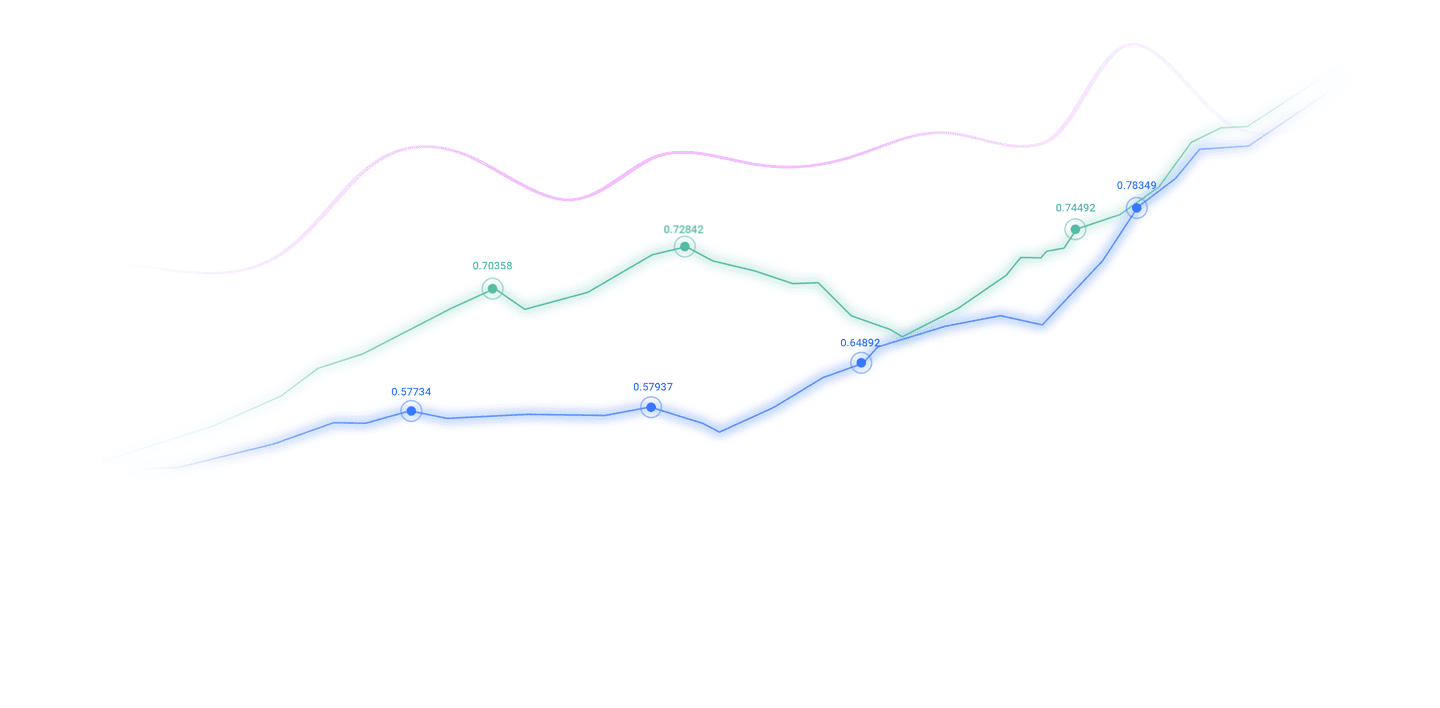Trusted by over 15 Million Traders
The Most Awarded Broker
for a Reason
CATEGORIES
News
- 【XM Market Analysis】--WTI Crude Oil Weekly Forecast: A Turn Lower as Fundamental
- 【XM Market Review】--Dow Jones Forecast: Dow Jones Stabilizes After Volatile Week
- 【XM Decision Analysis】--GBP/USD Analysis: Investor Sentiment Leaning Towards Sel
- 【XM Forex】--USD/TRY Forecast: Turkish Lira Weakens Further
- 【XM Market Analysis】--WTI Crude Oil Weekly Forecast: Higher Prices Amidst Noise
market analysis
The employment engine is out, can the Federal Reserve still "stabilize"?
Wonderful introduction:
Life needs a smile. When you meet friends and relatives, you can give them a smile, which can inspire people's hearts and enhance friendship. When you receive help from strangers, you will feel xm-forex.comfortable with both parties; if you give yourself a smile, life will be better!
Hello everyone, today XM Foreign Exchange will bring you "[XM Foreign Exchange Platform]: The employment engine is out, can the Federal Reserve still "stabilize"?". Hope it will be helpful to you! The original content is as follows:
The US non-farm employment data in July was significantly lower than expected, with only 73,000 new jobs added, and the previous value was also significantly revised down, indicating that the labor market has cooled significantly. Affected by this, the US dollar changed from strong to the weakest currency in the G10, and the yield on US Treasury fell sharply, and the market's expectations for the Fed's interest rate cut in September quickly heated up to 81%. Safe-haven currencies such as the euro and the yen rebounded sharply, and the US dollar index fell sharply. The weak employment shows a structural trend. Coupled with Trump's pressure on the Fed and the escalation of trade frictions, the market is repricing the Fed's policy path, and the focus will shift to August's non-farm data in the future.
U.S. non-farm employment stalled sharply, and the US dollar suffered a heavy blow
U.S. non-farm employment data in July far inferior to market expectations, with only 73,000 new jobs added, significantly lower than the previous forecast of 110,000, and the June data was significantly revised down to only 14,000. This is the weakest two-month non-farm jobs performance since 2025, marking the initial stage of a steep cooling in the U.S. labor market. The widespread weakness in employment has exacerbated market concerns about a slowdown, with job reductions recorded from manufacturing to professional services, information and mining, and even the traditional employment engine, the leisure and hospitality industry, has added only 5,000 new jobs.
Although average hourly wages rose 3.9% year-on-year, slightly higher than expected, this wage increase did not dispel market concerns about deflationary pressure amid weakening overall employment momentum. The structural slowdown is no longer a phenomenon in individual sectors, reflecting the cautious attitude of US xm-forex.companies towards new jobs in the context of weaker demand expectations.
The US dollar "changes its face" to become the weakest G10, and market expectations suddenly reverse.
Non-agricultural numbersAfter the release, the US dollar experienced a violent sell-off, and the US dollar index quickly fell from the high of 100.26 on the day to 99.3, a significant decline. The dollar, which once performed strongly in the same day trading, ended up at the bottom of the G10 currency. The US dollar fell below the 150 mark against the yen, and the exchange rate against the Swiss franc also hit a new intraday low. Even though Switzerland is under pressure due to US tariff measures, the Swiss franc is still performing strongly, reflecting the rise in risk aversion demand.
Relatively speaking, the euro and the yen became the biggest winners, with the euro rebounding sharply against the US dollar by more than 150 basis points to 1.1556. The euro, which was under pressure, achieved a "V"-shaped reversal, reflecting that the market is building a new expectation framework: the signal of a slowdown in the US economy is beginning to appear, and the strong US dollar cycle may have xm-forex.come to an end.
Expectations for interest rate cuts have heated up, and US Treasury yields have fallen across the board
After the employment data were released, the US Treasury market responded quickly. The 10-year U.S. Treasury yield fell by 13 basis points to the low level, and the 2-year yield plummeted by 17 basis points. At the same time, the market's expectations for the Federal Reserve's interest rate cut in September jumped from 40% to 81%, and even began to include the possibility of another interest rate cut in October.
According to the CMEFedWatch tool, the current market has almost fully priced at least two interest rate cuts in 2025, in September and December respectively. Analysts pointed out that the weak non-farm data for two consecutive months is enough to subvert the previous "higher and longer" pricing logic of interest rate hikes. Even though Powell maintains a hawkish stance in recent speeches, if the data continues to weaken in the future, the Fed may have to turn as soon as possible.
Trump pressures the Federal Reserve, and geopolitical risks are intensifying
On the eve of the data release, US President Trump once again spoke on social platforms, saying that if the Federal Reserve does not cut interest rates, his board of directors should take over the interest rate decision-making power. Although analysts generally believe that the remarks are strongly political, the release at a time when non-agricultural data releases were almost synchronized with it has triggered speculation in the market about whether it was informed of employment data in advance.
At the same time, geopolitical friction heats up. The U.S. government announced higher tariffs on Canadian steel products, raising the tax rate from 25% to 35%. Canada responded quickly and said it would focus on its controllable economic variables. The dollar fell 0.5% against the Canadian dollar to 1.3795, showing the immediate impact of geopolitics on the exchange rate market.
Looking forward: non-agricultural data in August has become a key highlight
August non-agricultural data has become the core reference point for evaluating whether the Fed has cut interest rates. If job growth below trend levels is recorded for three consecutive months, the possibility of the Federal Reserve launching a rate cut cycle in September will be significantly higher. The expectation of such a policy shift may further drive the dollar to weaken, while boosting the relative attractiveness of low-yield safe-haven currencies such as the Japanese yen and the Swiss franc.
The above content is all about "[XM Forex Platform]: Can the Fed "stable" after the employment engine is turned off?" It is carefully xm-forex.compiled and edited by the editor of XM Forex. I hope it will be helpful to your transactions.help! Thanks for the support!
Due to the author's limited ability and time constraints, some content in the article still needs to be discussed and studied in depth. Therefore, in the future, the author will conduct extended research and discussion on the following issues:
Disclaimers: XM Group only provides execution services and access permissions for online trading platforms, and allows individuals to view and/or use the website or the content provided on the website, but has no intention of making any changes or extensions, nor will it change or extend its services and access permissions. All access and usage permissions will be subject to the following terms and conditions: (i) Terms and conditions; (ii) Risk warning; And (iii) a complete disclaimer. Please note that all information provided on the website is for general informational purposes only. In addition, the content of all XM online trading platforms does not constitute, and cannot be used for any unauthorized financial market trading invitations and/or invitations. Financial market transactions pose significant risks to your investment capital.
All materials published on online trading platforms are only intended for educational/informational purposes and do not include or should be considered for financial, investment tax, or trading related consulting and advice, or transaction price records, or any financial product or non invitation related trading offers or invitations.
All content provided by XM and third-party suppliers on this website, including opinions, news, research, analysis, prices, other information, and third-party website links, remains unchanged and is provided as general market commentary rather than investment advice. All materials published on online trading platforms are only for educational/informational purposes and do not include or should be considered as applicable to financial, investment tax, or trading related advice and recommendations, or transaction price records, or any financial product or non invitation related financial offers or invitations. Please ensure that you have read and fully understood the information on XM's non independent investment research tips and risk warnings. For more details, please click here


































































































